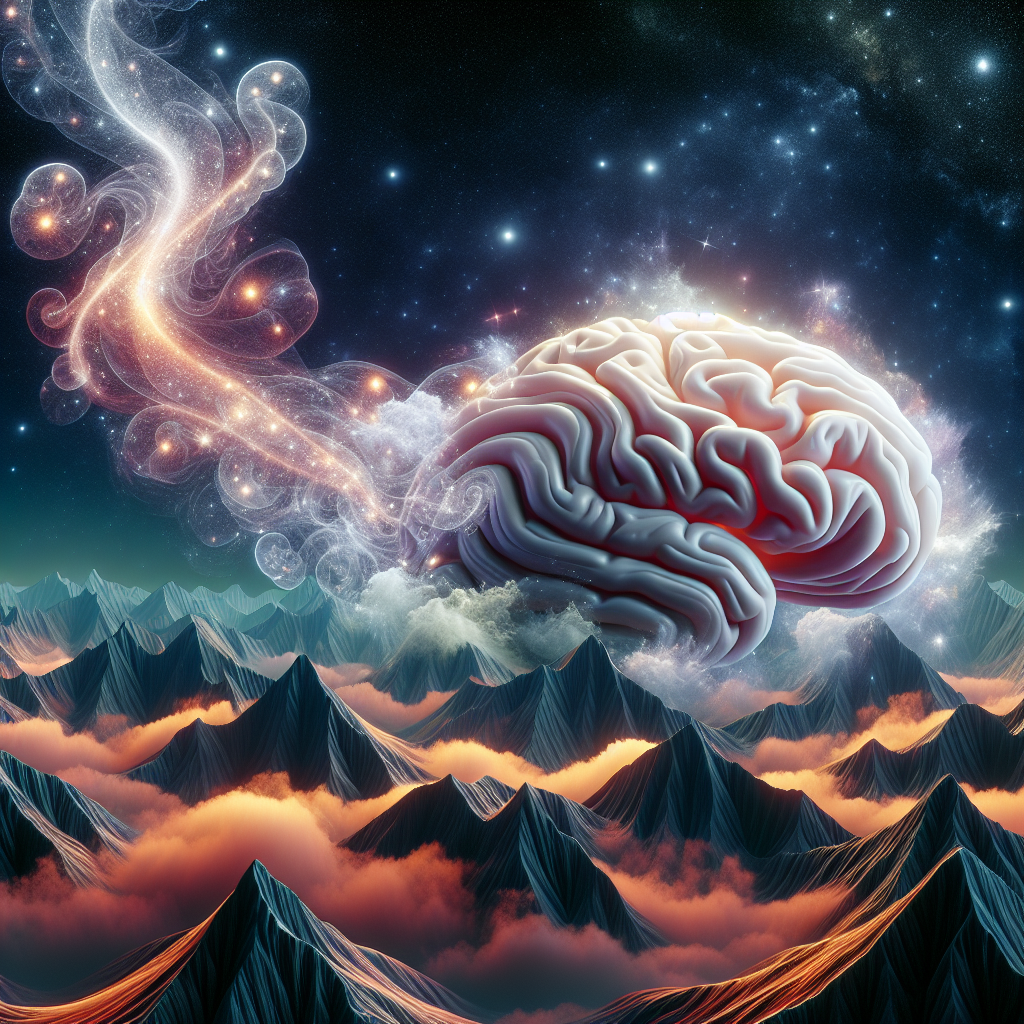
Table of Contents
- The Pineal Gland: The Sleep Regulator
- Melatonin Production and the Pineal Gland
- How the Pineal Gland Influences Dream States
- The Connection Between the Pineal Gland and Circadian Rhythms
- Practical Tips for Optimising Pineal Gland Function and Sleep Quality
- Conclusion
- What is the Pineal Gland and where is it located?
- How does the Pineal Gland produce melatonin?
- What role does melatonin play in sleep cycles?
- Can external factors influence the Pineal Gland’s function?
- Are there any natural ways to support Pineal Gland health?
Discover How the Pineal Gland Shapes Your Sleep and Dreams!
The pineal gland, a small yet significant endocrine structure nestled deep within the brain, plays a pivotal role in regulating our sleep cycles through the production of melatonin, a hormone that signals the body when it is time to rest. As we delve into the intricate relationship between the pineal gland and our sleep patterns, we will explore how melatonin influences not only the quality of our slumber but also the fascinating world of dream states. Understanding this connection can shed light on various sleep disorders and offer insights into enhancing overall well-being. By unraveling the mysteries surrounding the pineal gland, we can better appreciate its impact on our nightly rejuvenation and the profound effects it has on our daily lives.
The Pineal Gland: The Sleep Regulator
The pineal gland is often referred to as the third eye due to its sensitivity to light and its location deep within the brain. This tiny gland is about the size of a grain of rice but has a significant influence on our sleep-wake cycles. It produces melatonin in response to darkness, signalling to your body that it’s time to wind down. When the sun sets, light diminishes, and your pineal gland kicks into action, releasing melatonin to help you feel sleepy. Conversely, exposure to light in the morning halts melatonin production, helping you wake up and feel alert.
Melatonin Production and the Pineal Gland
Melatonin production is intricately linked to the pineal gland’s function. During the day, levels of melatonin are low, but as night falls, production ramps up. This hormone not only regulates sleep but also plays a role in various bodily functions, including immune response and mood regulation. Interestingly, factors such as age, lifestyle, and even screen time can affect melatonin levels. For instance, blue light emitted from screens can inhibit melatonin production, leading to disrupted sleep patterns. This is why many experts recommend limiting screen time before bed to promote better sleep.
Research has shown that melatonin supplements can be beneficial for those struggling with sleep disorders. However, it’s crucial to consult with a healthcare professional before starting any supplementation, as improper use can lead to more sleep issues.
How the Pineal Gland Influences Dream States
Dreams are a fascinating aspect of sleep that are often influenced by the pineal gland’s activity. During REM (Rapid Eye Movement) sleep, when most dreaming occurs, melatonin levels are typically at their peak. This suggests that the quality and vividness of dreams may be closely tied to melatonin production. Some studies indicate that higher melatonin levels can lead to more intense and memorable dreams.
Moreover, the content of our dreams can be influenced by our daily experiences and emotional states. The pineal gland’s regulation of melatonin can help facilitate a deeper connection between our subconscious mind and our waking life. Understanding this connection can help individuals harness their dreams for personal insight or creative inspiration.
The Connection Between the Pineal Gland and Circadian Rhythms
The pineal gland is integral to maintaining our circadian rhythms—the internal clock that dictates our sleep-wake cycles over a 24-hour period. This rhythm is influenced by external cues like light and temperature. When functioning optimally, the pineal gland helps synchronise these rhythms with our environment, promoting restorative sleep at night and alertness during the day.
Disruptions in circadian rhythms can lead to various health issues, including insomnia, depression, and even metabolic disorders. For instance, shift workers often experience challenges due to irregular sleep patterns, which can be traced back to disruptions in melatonin production by the pineal gland.
Practical Tips for Optimising Pineal Gland Function and Sleep Quality
To enhance the function of your pineal gland and improve sleep quality, consider adopting some simple lifestyle changes. Establishing a consistent sleep schedule can help regulate your body’s internal clock. Aim for a regular bedtime and wake-up time—even on weekends—to reinforce your circadian rhythms.
Creating a sleep-friendly environment is also crucial. Keep your bedroom dark and cool, and consider using blackout curtains or an eye mask to block out light. Limiting caffeine intake in the afternoon and evening can further support melatonin production.
Finally, mindfulness practices such as meditation or yoga before bed can reduce stress levels, promoting relaxation and better sleep quality. These practices not only benefit your mental health but also support the overall function of your pineal gland.
Conclusion
In summary understanding the role of the Pineal Gland in regulating your sleep cycle and melatonin production is crucial for achieving restful nights and vivid dreams. If you’re excited about unlocking the secrets of your sleep and feeling truly at peace with the world don’t wait! Take action now to explore how you can optimise your sleep health and embrace the wonders of your Pineal Gland today!
What is the Pineal Gland and where is it located?
The pineal gland is a small pea-shaped endocrine gland situated deep within the brain specifically between the two hemispheres. It plays a key role in regulating sleep patterns through the secretion of melatonin a hormone that influences circadian rhythms. This tiny gland might not get much attention but it’s crucial for maintaining a healthy sleep cycle.
How does the Pineal Gland produce melatonin?
The production of melatonin by the pineal gland is primarily triggered by darkness. When the sun sets light exposure decreases prompting the gland to convert serotonin into melatonin. This process helps signal to your body that it’s time to wind down and prepare for sleep. So if you’re wondering why late-night screen time can mess with your sleep now you know – it’s all about that pesky light!
What role does melatonin play in sleep cycles?
Melatonin is often referred to as the sleep hormone because it helps regulate your sleep-wake cycle. As melatonin levels rise in the evening you start to feel sleepy and as they drop in the morning you wake up. This natural rhythm is essential for quality sleep and overall health. If your melatonin levels are off you might find yourself tossing and turning instead of enjoying a restful night.
Can external factors influence the Pineal Gland’s function?
Absolutely! Various external factors can affect how well your pineal gland functions. Light exposure especially blue light from screens can inhibit melatonin production making it harder to fall asleep. Other factors like stress diet and even certain medications can also impact melatonin levels. So if you’re struggling with sleep it might be worth considering how these elements play into your nightly routine.
Are there any natural ways to support Pineal Gland health?
Yes! There are several natural methods to support the health of your pineal gland. Maintaining a regular sleep schedule reducing exposure to artificial light in the evening and incorporating foods rich in tryptophan (like turkey and bananas) can help boost melatonin production. Additionally practices like meditation and spending time in nature can promote relaxation and support overall brain health. Who knew caring for such a small gland could have such a big impact on your sleep?
